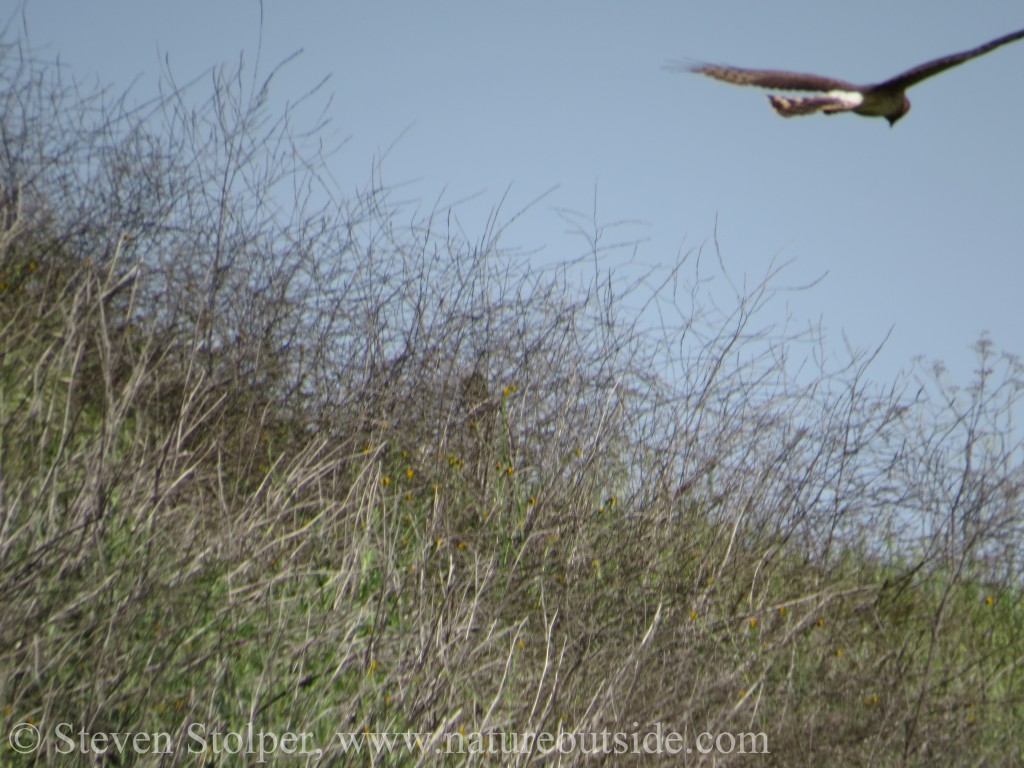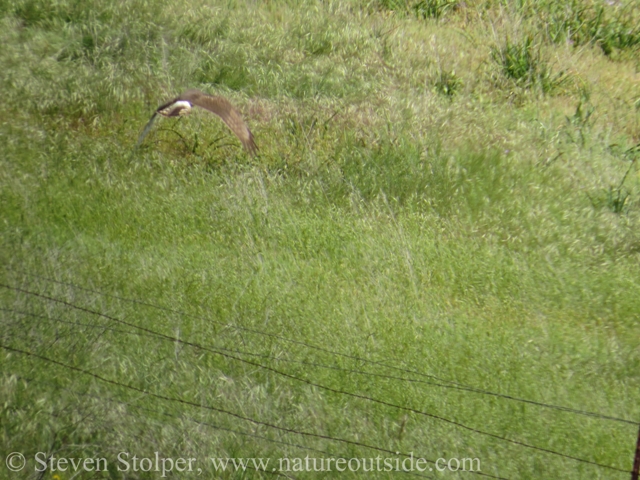
About a year ago, I purchased a sexy new digital camera. It was not too expensive, yet had many of the bells and whistles found on high-end units. I was seduced by its compact size and its long zoom lens.
Eager to try it out, I hit the trail. My head is swimming with all the great wildlife shots I’m going to take. My destination is a grassland area with a commanding view of the surrounding terrain. Almost immediately, a wonderful bird of prey flies by. I lift my camera with dreams of a National Geographic Magazine cover. But by the time I stop fiddling with the camera, aim, focus and shoot, the animal is half-way to the Caribbean! The pattern repeats itself several times as my frustration grows.
But when I return home, I realize that I accidentally captured two very valuable pictures. So let’s take advantage of my poor photography. 🙂
Below are two pictures of the south-bound end of a north-bound hawk. They capture a key feature for identifying this bird. Many times, we see hawks as a flash in the corner of our eye. They move so fast that a split-second identification is all we get before the animal is a distant speck. So any tip can help. I thought I’d pass on this tip to help those who may not have heard it before. Even though the pictures are crappy, we should be able to identify the bird from this feature.

Notice the white rump patch

Wing tips “dipped in ink” flying low and slow, hunting for prey
This article contains affiliate links.
Notice the white rump patch? This pretty much pegs it as a Northern Harrier. Other clues are (from the Peterson Field Guide to Western Birds), “A slim, long-winged, long-tailed raptor of open country. Glides and flies buoyantly and unsteadily low over ground, with wings held slightly above horizontal…” You can see its dihedral (v-shaped, upward angle) wings in the first picture. In the second picture we can see how low it is flying and a “dipped in ink” look to the wingtips that can help identification. In this case, I believe the bird is an adult female because of its brown coloring.
So even when our only view is of a retreating animal, we can learn a lot just by checking out its butt! 🙂
More Birds on NatureOutside
Birds Think You are a Scary Dinosaur
Change Your Trail to Change Your Attitude
Mouse Released into Wild Snatched by Hawk Ruins Good Deed
For fun facts and useful tips join the free Bushcraft Newsletter.



Leave a Comment